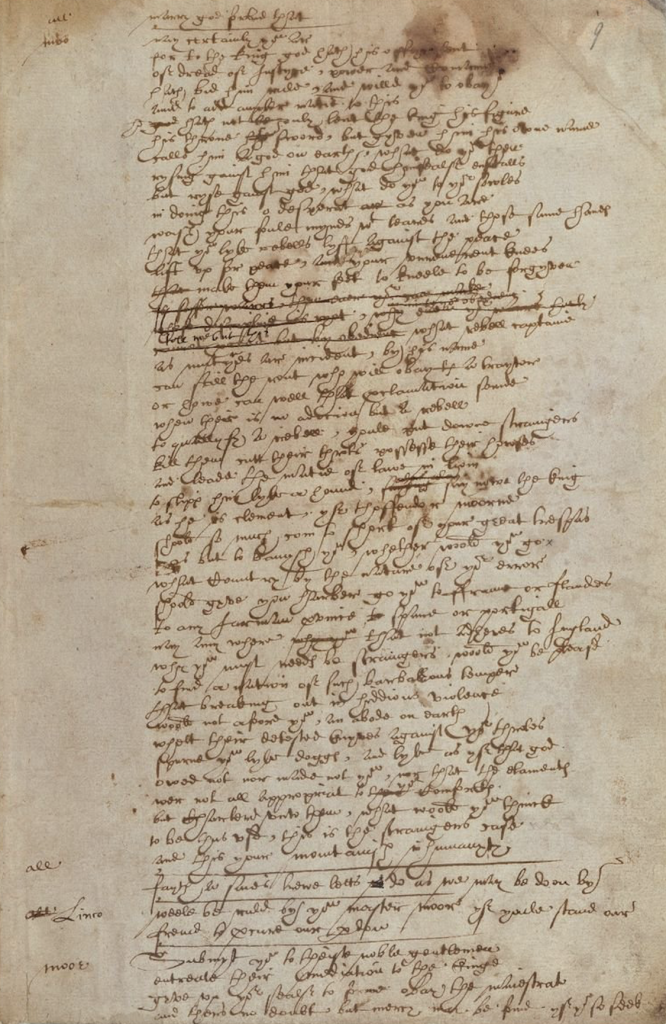
Last week, we posted on how scholars have tried to recover the original pronunciations of Shakespeare’s plays and poems when performed on the stage. Today, we bring you the bard’s original handwriting. Shakespeare’s handwriting has recently become the focus of a new article by Professor Douglas Bruster at UT Austin, who is using an analysis of the playwright’s quirky spellings and penmanship to solve a very old question of authorship. The page of handwriting you see above is a fragment of a lost play called Sir Thomas More and it goes by the name of “Hand D” (click the image above, and then the image that appears — for a much larger version).
Bruster’s short essay, published this month in the Oxford journal Notes & Queries, is far too inside baseball for anyone but hardcore textual scholars to make much sense of, but this New York Times article does a good job of distilling the finer points. Suffice it to say that thanks to Bruster’s painstaking analysis of Shakespeare’s distinctive handwriting, we can be fairly certain that a 1602 revision of Thomas Kyd’s enormously popular Renaissance play The Spanish Tragedy—in the words of Shakespeare scholar Eric Rasmussen—has the bard’s “fingerprints all over it.”
Related Content:
A Survey of Shakespeare’s Plays (Free Course)
Pink Floyd’s David Gilmour Sings Shakespeare’s Sonnet 18
Shakespeare’s Satirical Sonnet 130, As Read By Stephen Fry
Josh Jones is a writer and musician based in Durham, NC. Follow him at @jdmagness


No reputable forensic handwriting analyst would ever give this the time of day. There is insufficient sample size in the six signatures that comprise the total collected works of “William Shakspere” (as he spelled his name) of Stratford, to provide any reliable comparison. This is therefore a classic instance of a type 1 error (false positive). It is, moreover, germane to consider that the vast majority of the Sir Thomas More manuscript is the handwriting of Anthony Munday, a secretary to the Earl of Oxford.
There is considerable controversy surrounding the authenticity of the “six signatures” of Shakespeare. The two supposed signatures on the mortgage deed of 1613 are almost certainly not signatures at all, but the result of legal clerks writing his name on the tabs holding his seal in order to identify it. Likewise, the alleged signature on his deposition in Bellott vs. Mountjoy was most probably written by the court stenographer for identification purposes. Of the three signatures on his will, the first two were more likely written by Francis Collins, his attorney, and only the final one, preceded by the words “By me, William,” which are obviously written in a different hand, is undoubtedly Shakespeare’s. So to claim that “Hand D” belongs to Shakespeare is ridiculous.
s
So do I read this correctly? The entire text of Sir Thomas Moore is based on a calibration of six signatures, 5 of which are in serious doubt, leaving a learning set of just 5 letters?